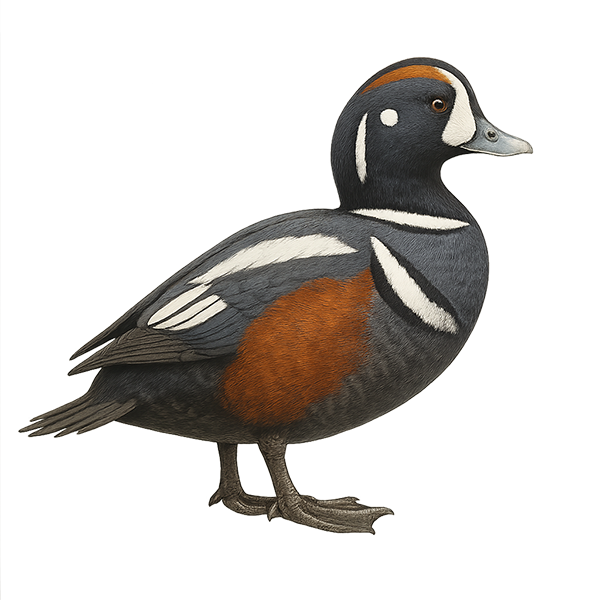Your wildlife photography guide.
Explore the harlequin duck in detail, study its behavior, prepare your shots.
Where to observe and photograph the harlequin duck in the wild
Learn where and when to spot the harlequin duck in the wild, how to identify the species based on distinctive features, and what natural environments it inhabits. The WildlifePhotographer app offers tailored photography tips that reflect the harlequin duck’s behavior, helping you capture better wildlife images. Explore the full species profile for key information including description, habitat, active periods, and approach techniques.
Harlequin Duck
Scientific name: Histrionicus histrionicus

IUCN Status: Least Concern
Family: ANATIDAE
Group: Birds
Sensitivity to human approach: Suspicious
Minimum approach distance: 10 m
Courtship display: May to June
Incubation: 27-30 jours
Hatchings: June to July
Habitat:
fast-flowing rivers, rocky coastlines
Activity period :
Primarily active during the day, with peak activity in the morning and late afternoon.
Identification and description:
The Harlequin Duck, Histrionicus histrionicus, is a medium-sized duck known for its striking plumage. Males display a mix of slate blue, white, and chestnut, with distinctive patterns on the head and body, while females are more subdued with brown tones and white spots around the eyes. This duck is primarily found in fast-flowing rivers and rocky coastlines of North America and Northeast Asia. It is known for its ability to dive and swim in turbulent waters in search of crustaceans and mollusks. The Harlequin Duck is a migratory bird, spending winters along the coasts and returning to rivers to breed in the spring.
Recommended lens:
400mm – adjust based on distance, desired framing (portrait or habitat), and approach conditions.
Photography tips:
To photograph the Harlequin Duck, it is advisable to use a telephoto lens of at least 400mm to capture the details of its plumage without disturbing it. Look for areas where these ducks gather, such as fast-flowing rivers or rocky coastlines. Be patient and discreet, as they can be suspicious. The best lighting is often early in the morning or late in the afternoon when the sun is low and the colors are richer. Use a tripod for stable shots, especially when working with long focal lengths.
The WildlifePhotographer App is coming soon!
Be the first to explore the best nature spots, track rutting seasons, log your observations, and observe more wildlife.
Already 1 431 wildlife lovers subscribed worldwide

